The ancient Egyptian civilization is well-known for its rich history, architecture, and culture. It was also renowned for its military prowess and its use of unique weapons. Among these, the Khopesh sword stands out as an iconic weapon that helped shape the history of Ancient Egypt. This strangely curved sword was the weapon of choice for many of Egypt’s greatest warriors, including Ramses III and Tutankhamun. Not only was it a deadly weapon, but it was also a symbol of power and prestige. In this article, we will delve deeper into the history and significance of the Khopesh sword, exploring its design, construction, and the impact it had on Ancient Egyptian warfare.
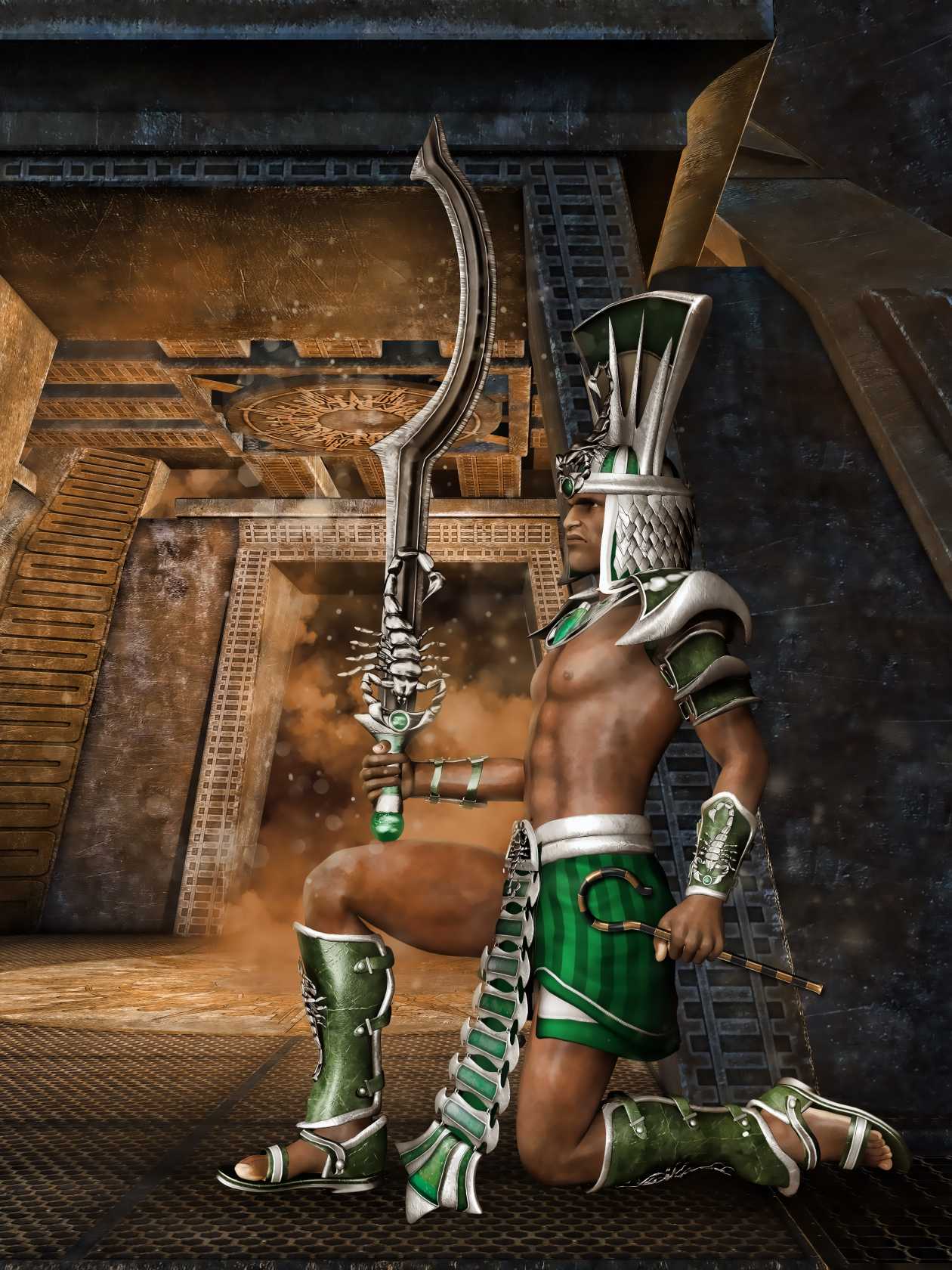
A brief history of Ancient Egyptian warfare
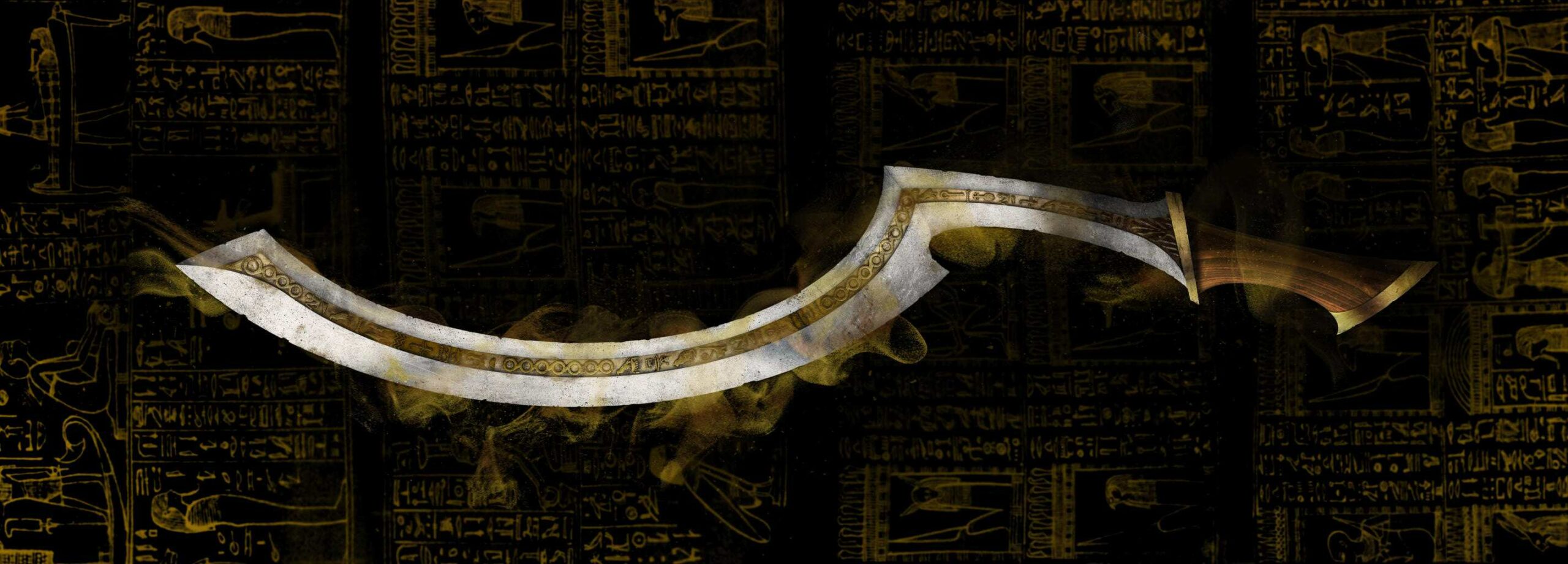
Ancient Egypt is known for its fascinating history, from the construction of the pyramids to the rise and fall of powerful pharaohs. But one aspect of their history that is often overlooked is their warfare. Ancient Egypt was a powerful empire, and their military played a significant role in keeping them that way. The ancient Egyptians were indeed skilled warriors who used a variety of weapons, including bows and arrows, spears, and knives. In addition to these weapons, they also used a unique and iconic weapon called the Khopesh sword.
This powerful weapon was a curved sword with a hook-like attachment at the end, making it a versatile weapon that could be used for both cutting and hooking. The ancient Egyptians used this sword in close-quarters combat, and it was particularly effective against enemies who were armed with shields. The ancient Egyptians were known for their strategy and organization in battle, and their use of the Khopesh sword was just one example of their military prowess. While warfare is a violent aspect of history, it is an important piece of understanding ancient cultures and the societies they built.
The origin of Khopesh sword?
The Khopesh sword is believed to have originated in the Middle Bronze Age, around 1800 BCE, and was used by the ancient Egyptians for over a thousand years. Though the actual origin of the Khopesh sword is shrouded in mystery, it is believed to have been developed from earlier weapons, such as the sickle swords, which were invented in Mesopotamia by the beginning of the 2nd millennium BC. Furthermore, the Stele of the Vultures, dating to 2500 BC, depicts the Sumerian king, Eanatum of Lagash, wielding what appears to be a sickle-shaped sword.
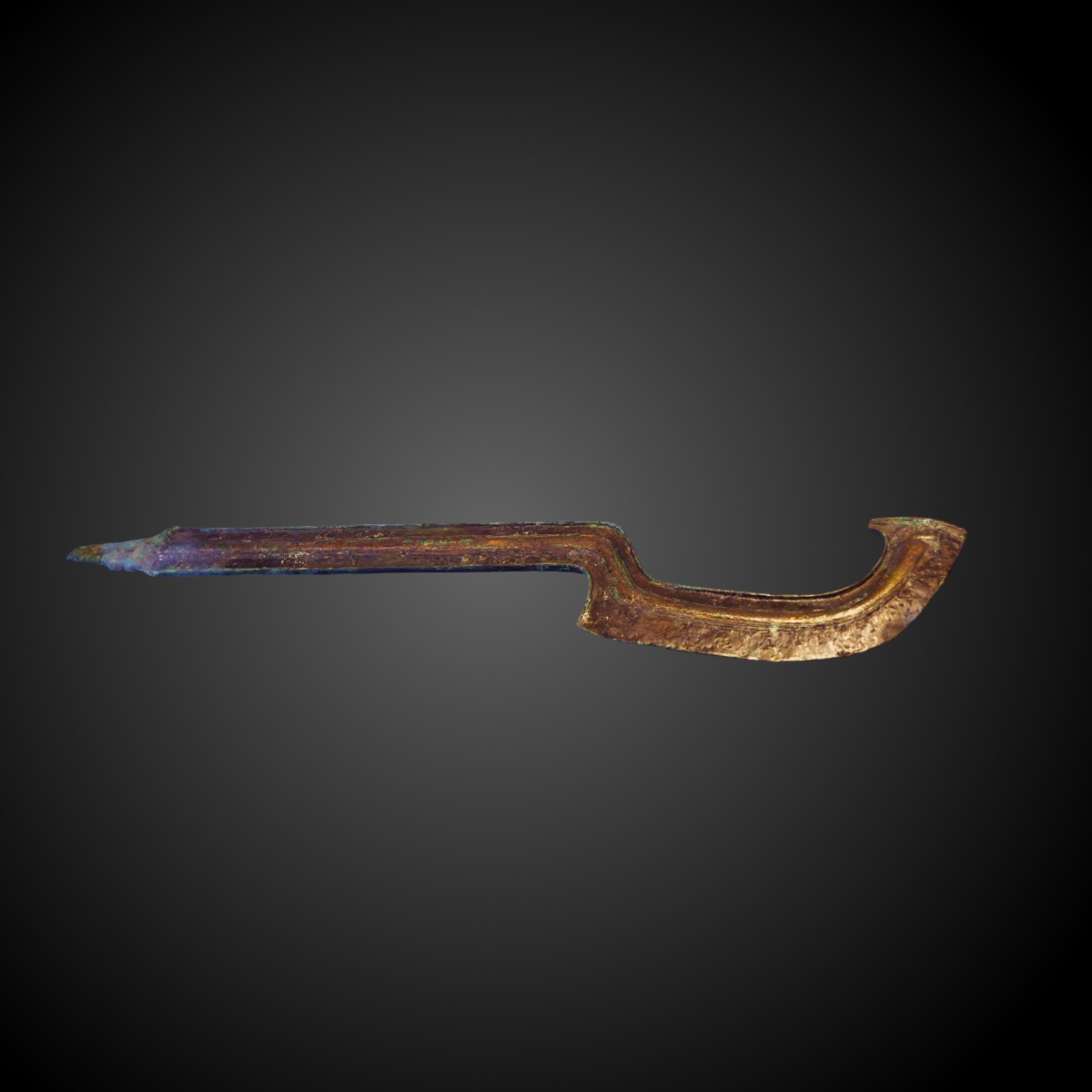
The Khopesh sword was initially used as a weapon of war, but it soon became a symbol of power and authority. Pharaohs and other high-ranking officials were often depicted holding a Khopesh sword in their hands, and it was also used in ceremonial and religious events. The Khopesh sword also played a significant role in several legendary battles, including the battle of Kadesh, fought between the Egyptians and the Hittites in 1274 BCE. Therefore, the Khopesh sword becomes an important part of the ancient Egyptian culture and continues to fascinate historians and enthusiasts alike, even today.
The construction and design of the Khopesh sword
The iconic Khopesh sword has a unique design that sets it apart from other swords of the time. The sword has a sickle-shaped blade that curves inward, making it ideal for slicing and chopping. The sword was originally made of bronze, but later versions were crafted from iron. The hilt of the Khopesh sword is also unique. It consists of a handle that is curved like the blade, and a crossbar that helps to keep the sword in the hands of the wielder.
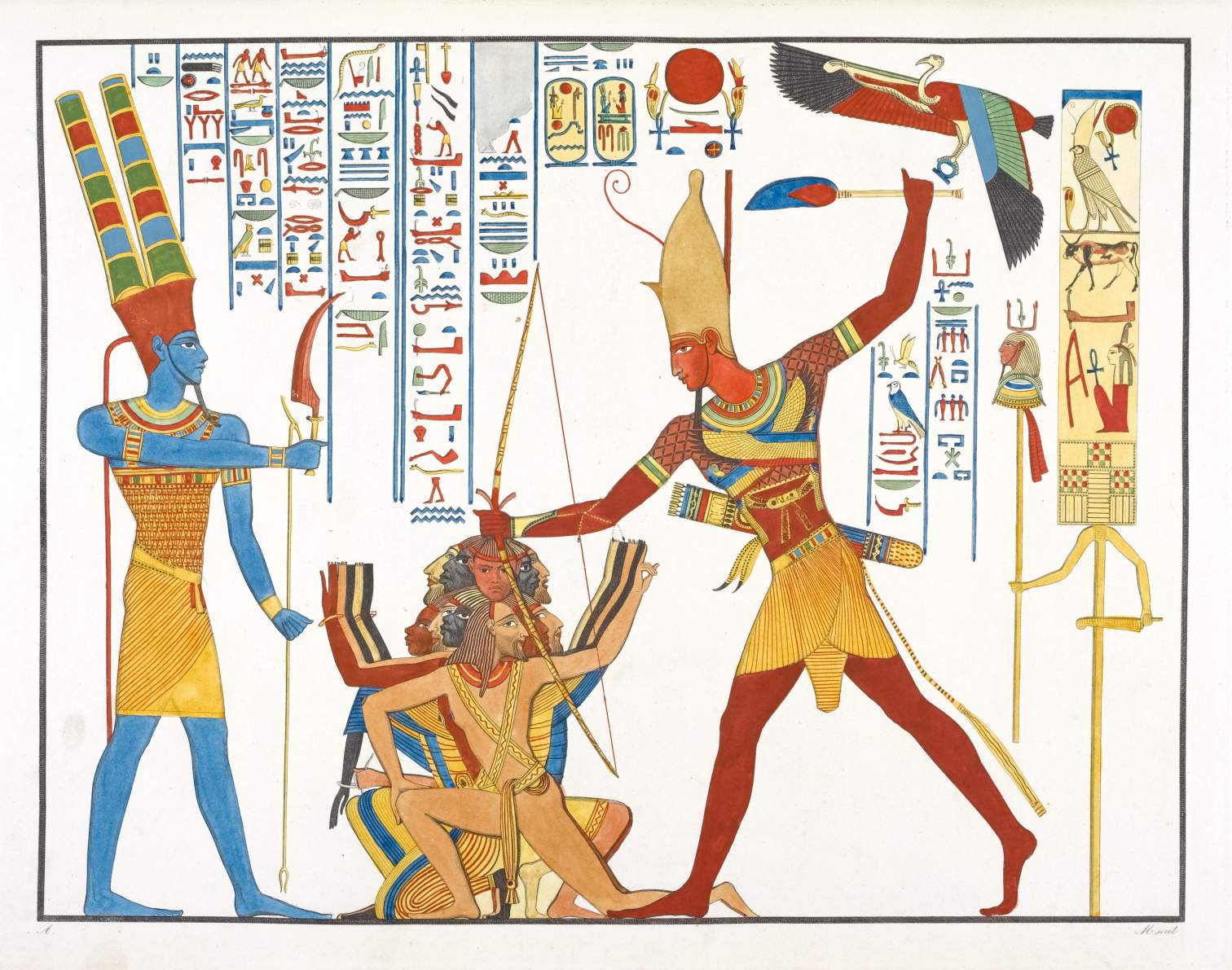
Some Khopesh swords also had a pommel at the end of the handle that could be used as a blunt force weapon. The construction of the Khopesh sword was done by blacksmiths of Ancient Egypt who were skilled in the art of metalworking. The blade was forged from a single piece of metal, which was heated and then hammered into shape. The final product was then sharpened and polished.
The design of the Khopesh sword was not only practical but also symbolic. The curved blade was meant to represent the crescent moon, which was a symbol of the Egyptian goddess of war, Sekhmet. The sword was also sometimes adorned with intricate engravings and decorations, which added to its aesthetic appeal. In conclusion, the Khopesh sword’s unique design and construction techniques made it an effective tool for battle, and its symbolism added to its cultural significance in Ancient Egyptian history.
Influence of the Egyptian Khopesh sword on other societies and cultures
During the 6th century BC, the Greeks adopted a sword with a curved blade, known as the machaira or kopis, which some experts believe was influenced by the Egyptian khopesh sword. The Hittites, who were enemies of the Egyptians in the Bronze Age, also used swords with similar designs to the khopesh, but it is uncertain whether they borrowed the design from Egypt or directly from Mesopotamia.
In addition, curved swords resembling the khopesh have been found in east and central Africa, specifically in the areas that now comprise Rwanda and Burundi, where dagger-like weapons similar to sickles were used. It is not known whether these blade-making traditions were inspired by Egypt or if the dagger design was created independently in this region so far south of Mesopotamia.
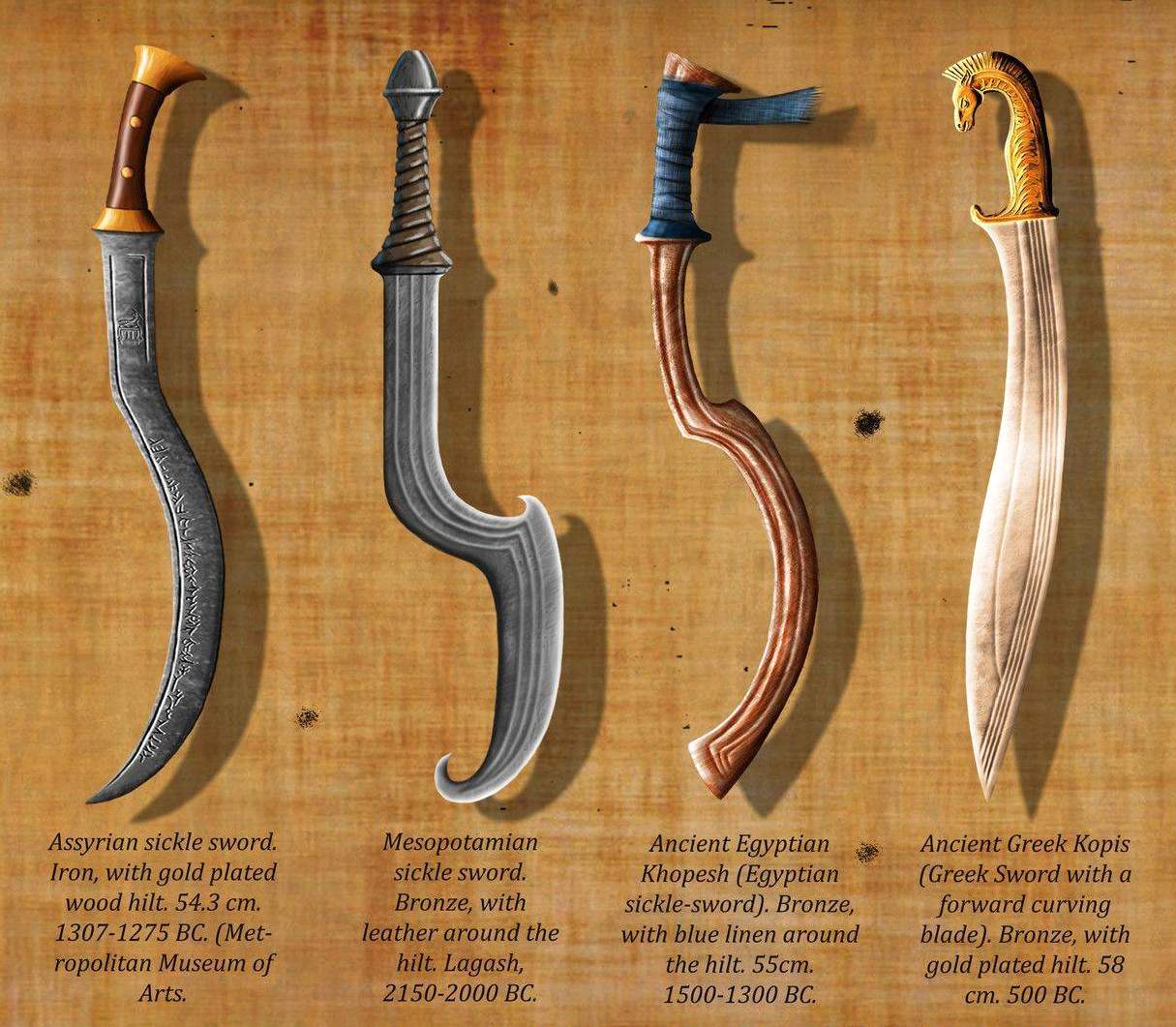
In certain regions of southern India and parts of Nepal, there are examples of a sword or dagger that resembles the khopesh. It is interesting to note that the Dravidian cultures in these areas have a connection to Mesopotamia, as evidenced by the Indus Valley civilization’s trade with Mesopotamia dating back to 3000 BC. This civilization, which was likely Dravidian, existed until the mid-2nd millennium BC, which would have been the ideal time for the transfer of khopesh-like sword-making techniques from Mesopotamia to the Dravidian civilization.
Conclusion: The significance of the Khopesh sword in Ancient Egyptian culture
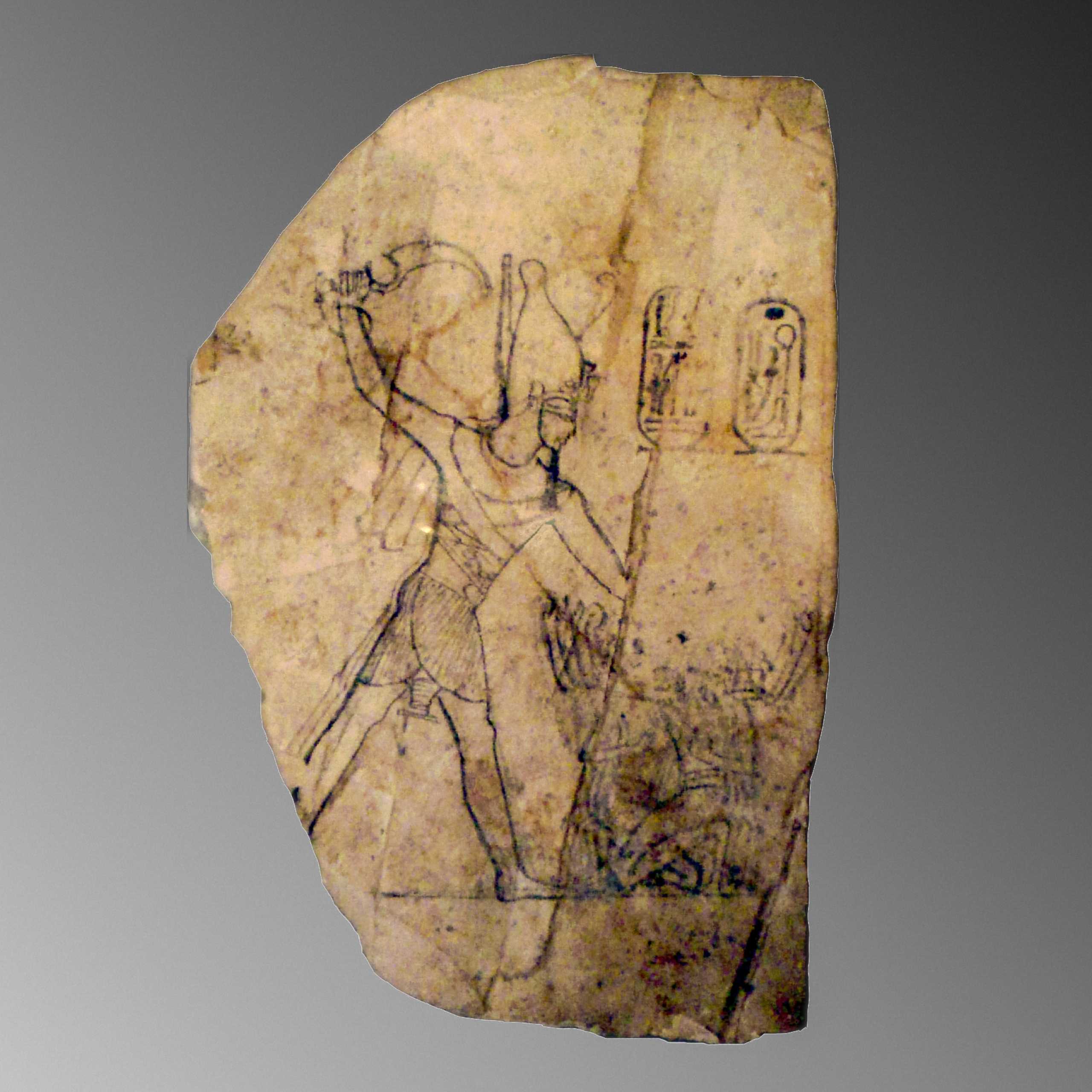
There’s no doubt that the Khopesh sword is one of the most iconic weapons in Egyptian history. It was an important weapon during the Old Kingdom period and was used by the Pharaohs’ elite warriors. Made of bronze or copper or iron, the sword was often decorated with intricate designs and inscriptions.
The Khopesh sword was not only a weapon, but it also had significant cultural and religious significance in Ancient Egypt. It was believed to be a symbol of power, authority, and protection. The sword was frequently depicted in Egyptian art or included in the tombs of prominent Egyptians, and was also used in various ceremonial contexts.
Pharaohs and other high-ranking officials were often depicted holding the Khopesh sword in their hands, and it was also used in religious ceremonies involving offerings to the gods. The Khopesh sword is one of the most recognizable symbols of Ancient Egypt, and its significance goes beyond its use as a weapon. It represents the power and authority of the Pharaohs and the importance of religion in Ancient Egyptian culture.




